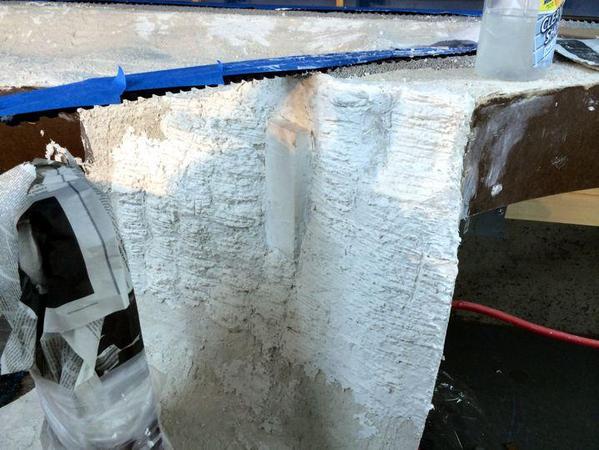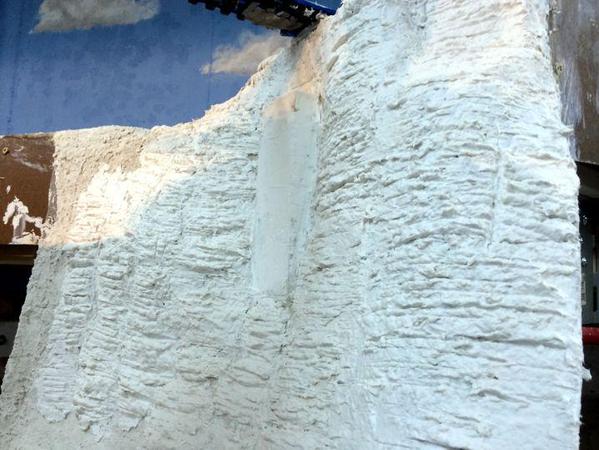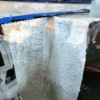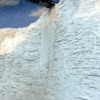The foam carving was just taking too long. I eventually want to get my bridges back up and be able to run trains again, but at the rate this carving was taking it would be months before I could. So I went the Sculptamold route with pretty good success.
I wet the now-dry Gypsolite with some "wet water" and mixed the Sculptamold in small batches. It's Plaster of Paris and sets pretty quickly so I keep the batches small. It doesn't have the same level of relief that the foam carving has, but it will look okay. This ravine is narrow and the thick foam carvings were reducing the size of the valley too much anyway.
I also spread a coat of light weight filler on the faux-concrete bridge abutments. When it dries I give it a light sanding and another coat if needed.
Here's a shot looking up from the valley floor.
When primed, colored, weathered and peppered with some sporadic vegetation and it will be a pretty good impression of a Kentucky Limestone river gorge.
At the speed this went together, I should have the other side of this ravine "rocked" in another good work session. I'll then work on the valley floor and prepared the river bed to receive whatever water effects I'm going to use. I'm leaning towards Envirotex polyester casting resin. I've used bar-top finish before and it works pretty well to simulate water.








